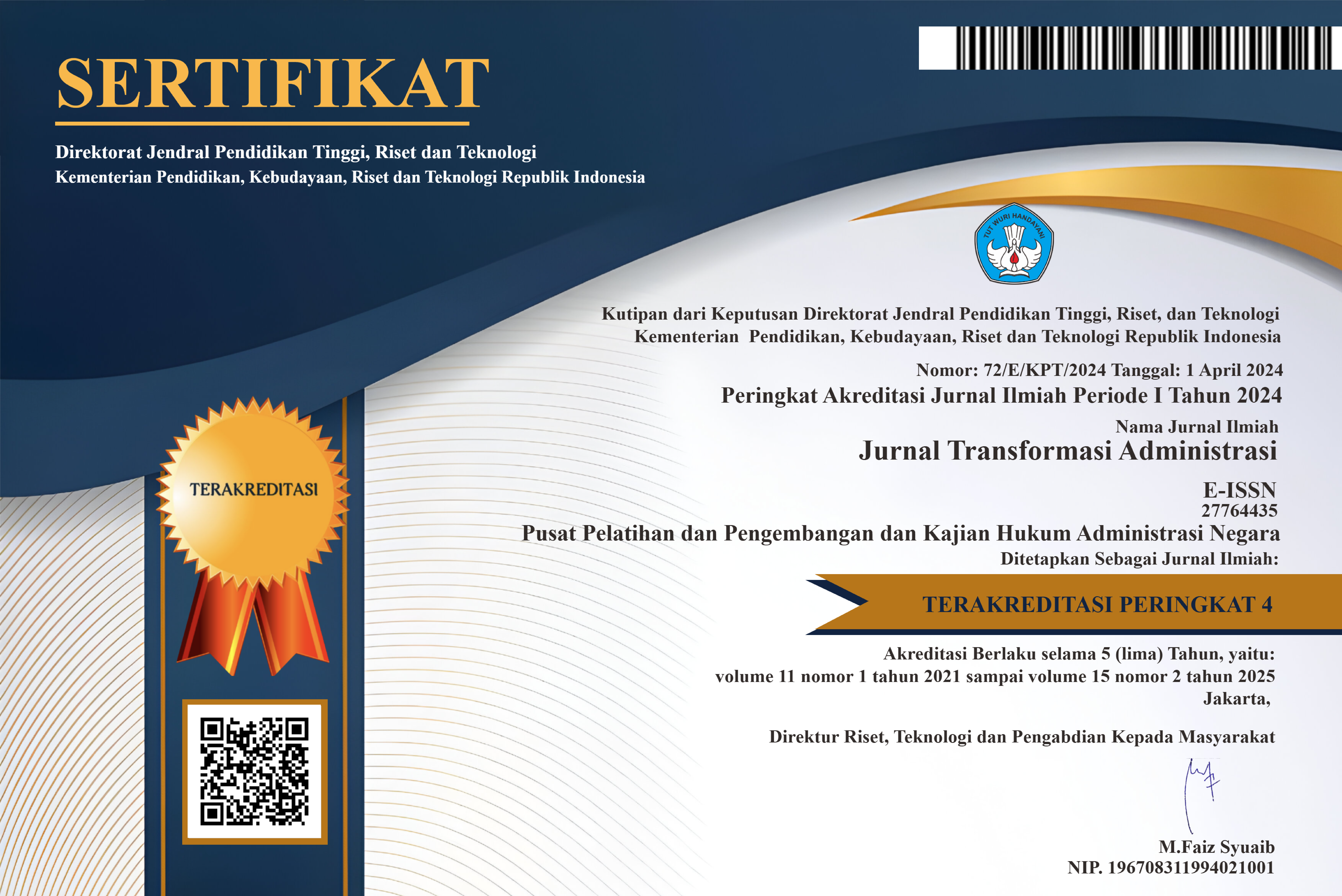The Effect Of Resident's Behavior On Waste Volume In Bandung
Keywords:
citizen behaviour, volume rubbish, garbage bankAbstract
Globally, Indonesia still faces of the millennium development goals (MDG) challenges especially in ecological waste management. Then it is necessary to accelerate the innovation of government waste management performance and reduce the volume of waste. This research was focused at Coblong District, Bandung City and employed quantitative descriptive method. The method was used to describe the influence of people's behavior to the volume of waste that is produced. This research also recommends innovation on waste management model. This study shows that there is significant influence between the behavior of citizens and the volume of waste generated. Therefore, innovation model of independent waste management by the residents is very effective and efficient especially with the assistance of relevant NGOs. This research also recommends that it is necessary to create more impactful waste management by promoting citizen participation and more intense assistance from the Government and NGOs in the District Coblong Bandung.
References
Bender, K. W., Cedeno, J. E., Cirone, J. F., Klaus, K. P., Leahey, L. C., & Menyhert, T. D. (2000). Engineering Management Journal, 12(4), 17-24.
Dunleavy, P., Margetts, H., Bastow, S. and Tinkler, J. (2008) .Digital Era Governance: IT Corporations, the State, and eGovernment, Oxford University Press, New York.
Fauzi, Ahmad Fijie (2010). Akumulasi Sampah di Pemukiman Kumuh dan Pemukiman Elite Wilayah Kecamatan Coblong Kota Bandung. FPIPS Universitas Pendidikan Indonesia. Skripsi tidak dipublikasikan.
Giddens, Anthony (2005) KonsekuensiKonsekuensi Modernitas. Yogyakarta: Kreasi Wacana.
Grydehøj, A. (2013). Challenges to local government innovation: legal and institutional impediments to the exercise of innovative economic development policy by subnational jurisdictions. European Journal of Spatial Development, 50, 1-22.
Hisan, Qusthan Abqary (2006). Menakar Konsumsi Rumah Tangga. Jurnal Mahasiswa Universitas Gadjah Mada (UGM) Balairung Volume XX Edisi 39.
Homburg, V. (2008). Understanding EGovernment: Information Systems in Public Administration, Routledge, New York.
Howard, J. H.(2012) Innovation, Ingenuity and Initiative: The adoption and application of new Ideasin Australian local government, Canberra, ANSZOG Institute for Governance, Australian Centre of Excellence for Local Government.
Jayanti, Niarie Dwi (2013). Analisis FaktorFaktor yang Mempengaruhi Green Pruchasing. Jurnal Administrasi Bisnis Vol. 5 No. 1.
Kamarck. (2003). Government Innovation Arround the World. Boston: Ash Institute for Democratic Governance and Innovation, John F. Kennedy School of Government, Harvard University, 5-6.
Krismiyati dan Shafiera Amalia (2013). Inovasi Pelayanan Publik di Daerah (Studi pada Pelayanan Persampahan di Wilayah Metropolitan Bandung raya). Sumedang: PKP2A 1 LAN.
Kurniawati, Meti (2014) Partisipasi Masyarakat dalam Mengimplementasikan Biomethagreen di Kelurahan Cibangkong Kecamatan Batununggal Kota Bandung. Bandung: Universitas Pendidikan Indonesia. Penelitian ini diunduh dari http://repository.upi.edu/12074/4/S_GEO_1000915_Chapter1.pdf pada tanggal 19 Juni 2015.
Pattakos, Alex., Dundon, Elaine. (2003). Cultivating Innovation in Government; Oxymoron or Core Competency? In Canadian Government Executive, Issue 3, 14-16.
Singarimbun, Masri dan Sofian Effendi (1995) . Metode Penelitian Survai Tangerang : LP3ES. Hlm. 3.
Skinner, B.F (1938). The Behavior of Organism: An Experimental Analysis. New York; Appleton-Century-Crofts. Inc. Hlm. 89, 308.
Setiap Hari 400 Ton Sampah di Kota Bandung Tak Terangkut diakses dari http://nationalgeographic.co.id/berita/2014/09/setiap-hari-400-tonsampah-di-kota-bandung-tak-terangkut. tanggal 17 Juni 2015 , .
Sukmawidianti, Annisa (2013) Kinerja Pengelolaan Sampah Perusahaan Daerah (PD) Kebersihan Di Kecamatan Coblong Kota Bandung. Skripsi di Program Studi Ilmu Pemerintahan, Fakultas Ilmu Sosial Dan Ilmu Politik, Universitas Komputer Indonesia.
Yildiz, M. (2007). 'E-government research: reviewing the literature, limitations, and ways forward', Government Information Quarterly, Vol. 24, No. 3, 646–665.















